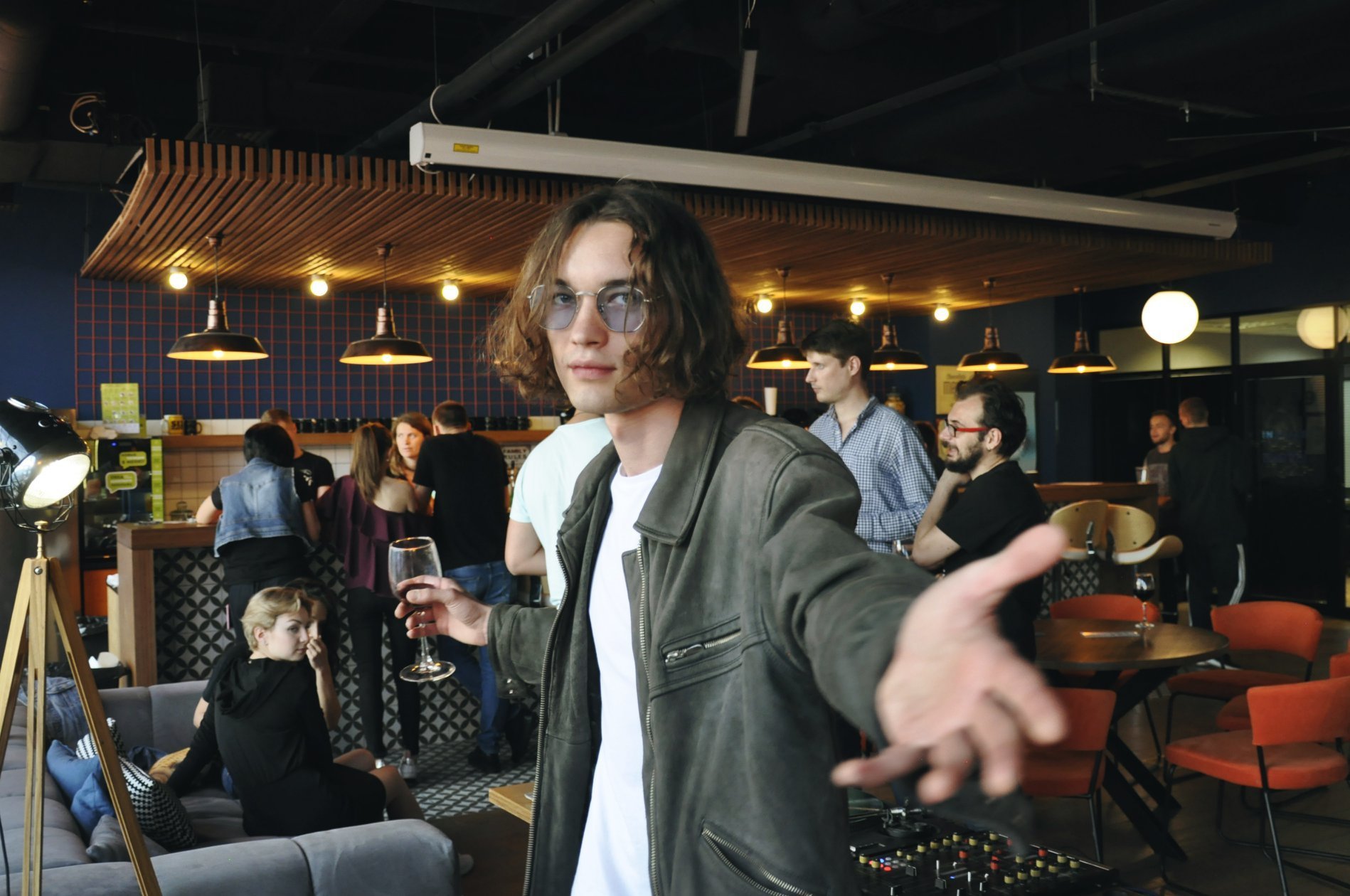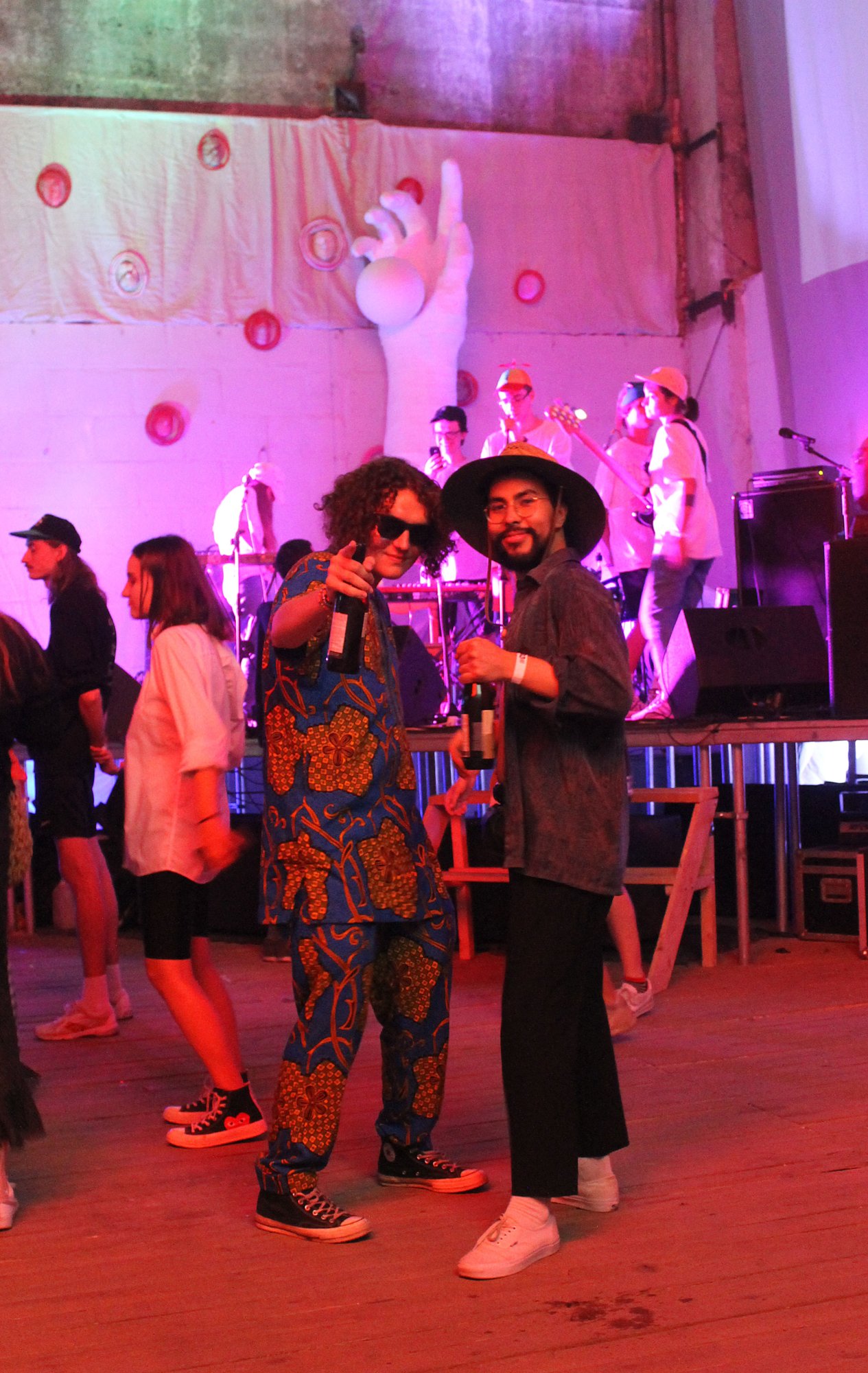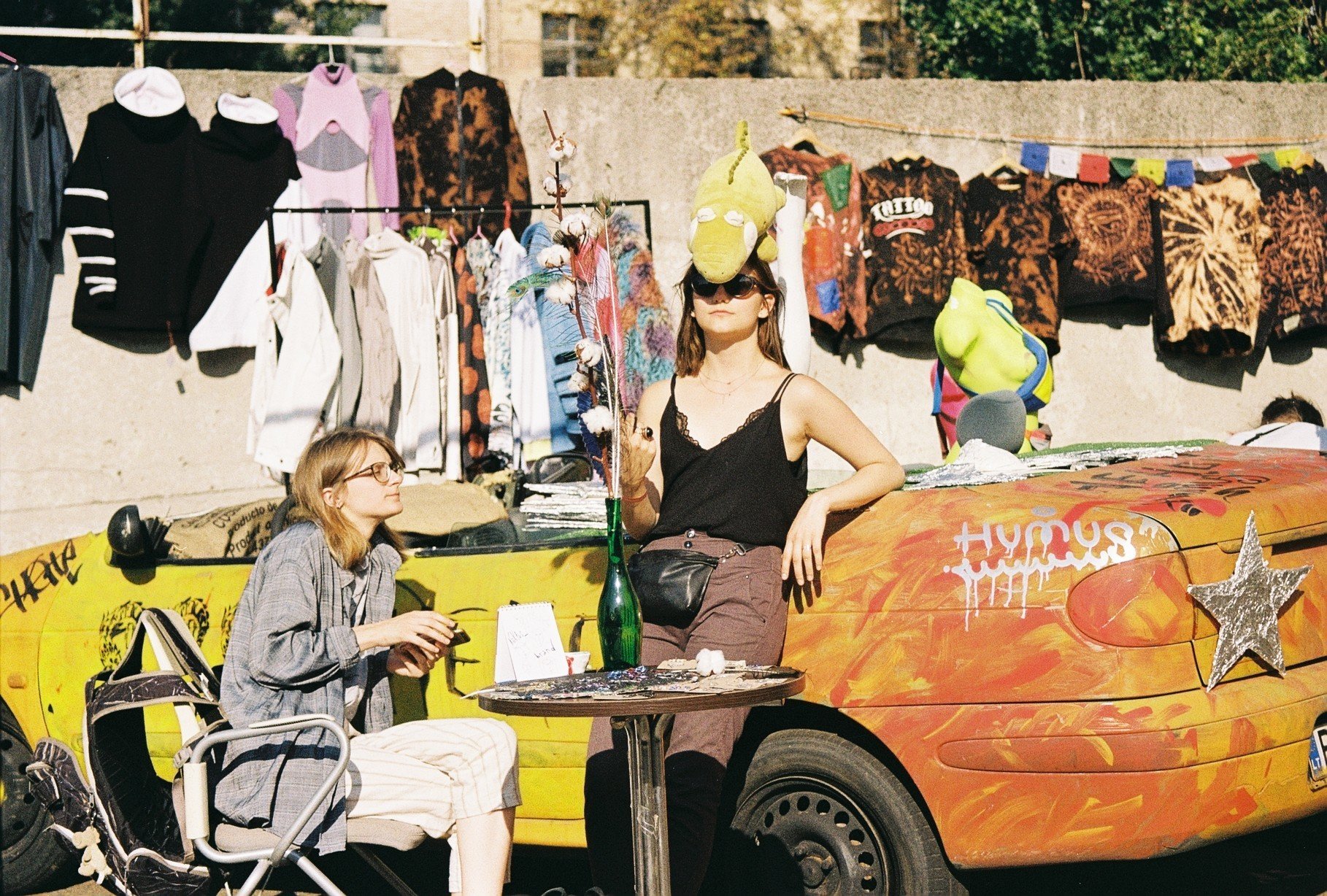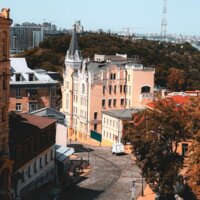H1. Vertuha Arts Festival: How Andrii Sukhariev Revitalized Kyiv’s Underground Music Scene

On the 31st of August 2019, a roar echoed through the streets of Kyiv. Rumors surfaced about a massive 'everything festival' which would unite underground artists from Ukraine, Germany, and France, bringing Nonames to the stage and giving a voice to the underrated artistic youth. Made in collaboration with Reverberation DE, Vertuha Arts Festival delivered the most eccentric mix of arts ever seen in Kyiv, promising to return bigger and wilder in 2020.
The man behind the madness is Andrew Sukhariev. Andrew sleeps four hours per day, organizes popular vinyl parties, networks with the underground artists of Kyiv, and embarks on month-long tours of Europe with his band Love'n'Joy, partying, dreaming, and spreading love on the road.
Luckily, Andrew found time off his tight schedule to tell Kyivmaps about his experiences, and his preparations for Vertuha Arts Festival 2020.
That summer, I've organized multiple Vertuha vinyl parties, and I wondered if I could take it further, make something bigger: like a vast psychedelic "end of the summer" party. Ideas were flying everywhere, and we couldn't settle on anything specific.
So we decided to make a huge festival which will include literally everything.
After we agreed on the idea with Yura and the gang, I was excited and jumped straight to finding and booking local bands, location scouting, and gathering a group of interested people. We found Kurenivka, which is this colossal art-hangar and squat where painters and sculptors live and throw parties. The organization process started involving more people every day, and by the end, we were so exhausted that we had to take a two-week vacation before getting back to work. The whole fest was planned out and organized within the span of two months.
Lots of stuff was happening around this time. I worked at an IT firm and had a European tour with my band Love'n'Joy. I dedicated every free minute of my time to the festival. All of it seemed impossible to combine, but we managed.
We did not expect to make any money off the fest. Making a great event and watch our wildest ideas come to life is much more rewarding. And that is precisely what happened.

Media outlets like Slukh, Comma, and Katakult also got word of the festival. I did a series of radio interviews, both alone and with our curators. Media interest in the festival peaked a few days before the event itself. I found myself on several live broadcasts just days before the event, most of which I don't remember the names of.

Last year's festival saw over 300 artists take the stage, including musicians, painters, and volunteers. Around 1300 people showed up, judging from the ticket sales. It was a mad experiment that didn't go unnoticed.
From our side, there were friend-activists and reliable assistants like Vertuha party manager Lyubov Lisichkina and talented photographer Anya Evstigneeva, who exhibited photos from the "Planeta Plastik" series. Zhenya Advokat from the group "Advokaty" and his girlfriend, artist Alina Khorolskaya, made art installations, one of which is called "Cones in the Snow." The piece depicts a forest and bloody cones in the snow, under which trash is thrown away carelessly. One of the stages was a large garbage can that no one wanted to rent for a day. We kind of had to "borrow" it straight from the street.
The primary purpose was to draw attention to environmental issues such as the recycling of garbage. In places like Germany, they can call the police for improper sorting, while in Kyiv, it isn't practiced at all. This is important because it guides people's minds in the right direction: being respectful to the environment they live in. It's like memorizing a poem: you have to repeat it several times before you learn it.
We were fortunate enough to work with people like Sergey Cane from Comma who posted the festival guide, Daria Tarkovskaya of Music Export Ukraine helped hold music talks, and Robin Heller, our main inspiration from Germany, who does the Reverberation Festival in Dresden. It was from Robin that we borrowed the idea of setting up two stages parallel to one another. We wanted to achieve an endless stream of music, so when one band finishes playing - the next one starts right away.
All the artists participated in this festival for free. Everyone was excited to gain this experience and support the underground scene, and the magic came from that.
As a musician, I know how hard it is to find a good festival to attend, let alone perform on one. One thing that made us stand out is the fact that most of our participants were unestablished, Noname artists. The idea that most concert organizers in Kyiv fail to see is that when you bind many Nonames together, it creates a robust and competitive atmosphere where everybody performs to the best of their abilities.
The festival included artists from various genres of music. Several bands debuted on the show, playing live for the first time. But they were driven and pulled off amazing performances; we discovered many small artists with huge potential for greatness.
Also, we were lucky enough to have met and worked with Valeriy Viter, who agreed to reunite his legendary band Kobza for the festival. This was our little addition to the reinvigoration of lost Ukrainian art, an idea which is has been gaining a lot of attention recently.
This festival motivated several new artists to finalize their projects and present their work in front of an audience. Or even to re-think their approach and view their work as a greater contribution to Ukrainian culture.
We initially planned on making a free entrance but had to abandon this idea after having calculated our spendings. Lots of money went into things like transferring Bob Basset's masks from Kharkiv, or Nikita Kravtsov's paintings. Renting equipment and lights for two live stages and two DJ stages were also costly.
Our entrance fee was pretty low. You'd spend the same amount of money by going to a local gig. But instead of seeing one or two bands you saw about twenty bands and the same amount DJs and had four stages and moods to pick from.
It was thirty hours of music nonstop. Plus, twenty painters took part in the art exhibition, with several making art installations exclusively for the festival. You could walk around and enjoy yourself in any way you wanted.
Kurenivka also had their local bar, so we didn't have much to do with the alcohol. We just set up a little tea-wine bar and two spots with street food, which helped cover a good portion of the losses. In the end, we came out with no losses.
Everybody helped everybody. That's how visualizations, stage decorations were born. The more artists came and participated, the more the festival blossomed.
I think we're lucky to live in a country where people can band together when the time is right, so to speak.
Hold this vibe to the gala-concert, celebrating a year since we released our debut record with Love'n'Joy called "Bender on the Silk Road." We called it Love'n'Joy Gala concert, and it will go on for ten whole hours. On the 22nd of February in Mezzanine, you'll find our band playing with a group called Komissiya (a new crush of the Kyiv underground), Kraken Landau, and the side project of two co-creators of Vertuha (Seba Korecky and Kosta Denis) TBPOFT. Also, lots of vinyl, love, and, most importantly - you.
As for Vertuha 2020, we plan to do the same thing, except bigger and better. Thanks to Sharewood Booking, Reverberation fest, and Kontrabass Promo, we gained the chance to hear the best bands of the European underground scene. We are already holding talks with bands from Germany, Austria, France, Switzerland, as well as Netherlands and German artists, and even a mini-theatre.
During the organization of the festival, thanks to Stas Dmitriev, the project "Kepsky Spravy" was born, which does live studio performances of bands. The first release is already online and is dedicated to one of the most exciting bands of the Kyiv psychedelic scene - The Edge. We're placing high hopes on this show, and we even brainstormed some fascinating concepts for filming guest-musicians of the festival from different countries. And while we're in the process, listen to the podcast from Stas on his channel "Radio Naruga" and discover new names and sounds.
VERTUHA ARTS FESTIVAL - is an open platform where anybody can express themselves. Write to us on Facebook or fill in the online form - we read everything and respond to everyone.
More articles



